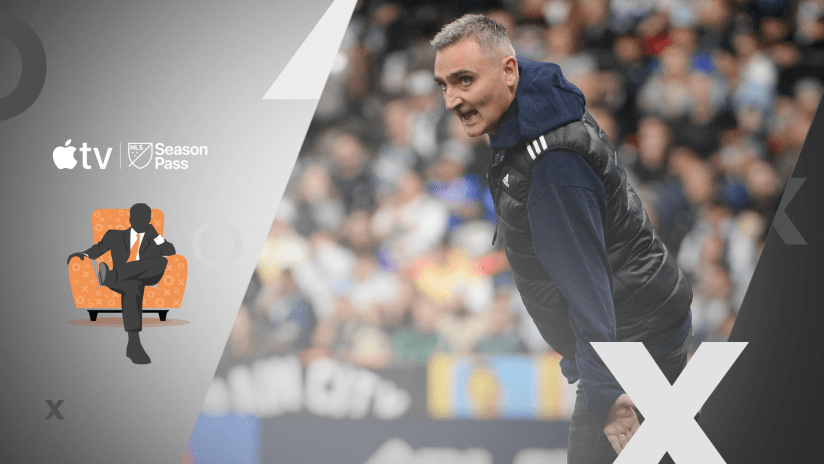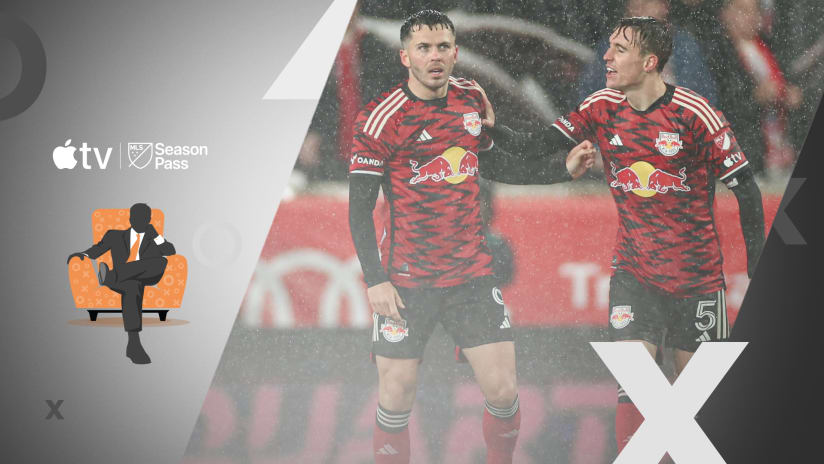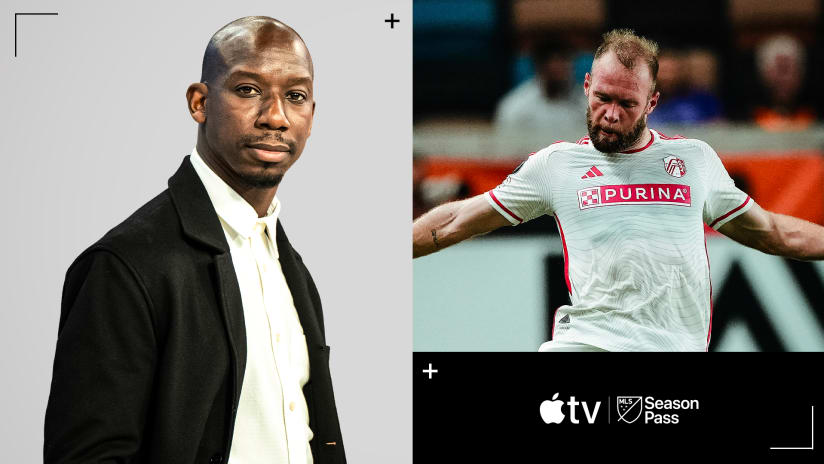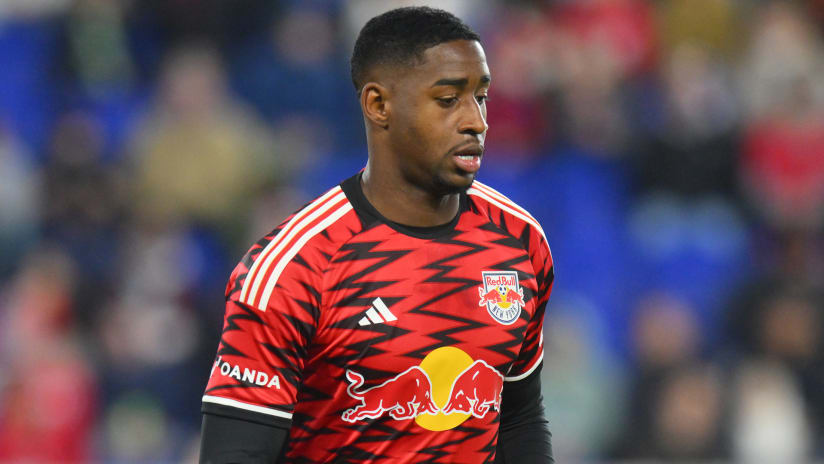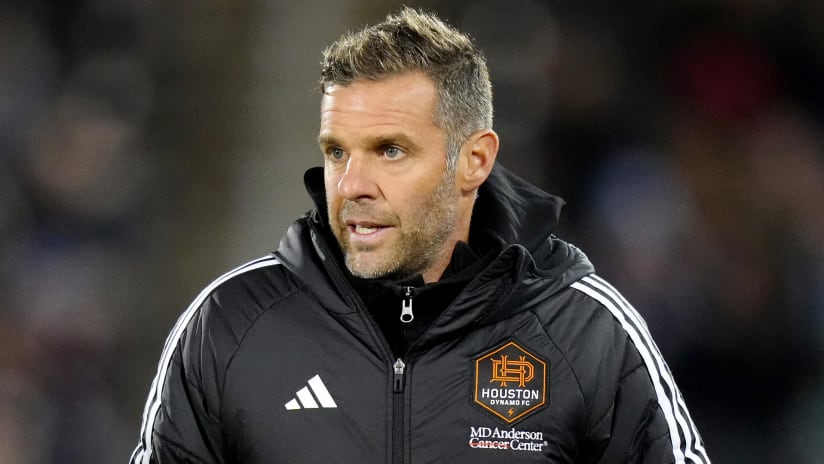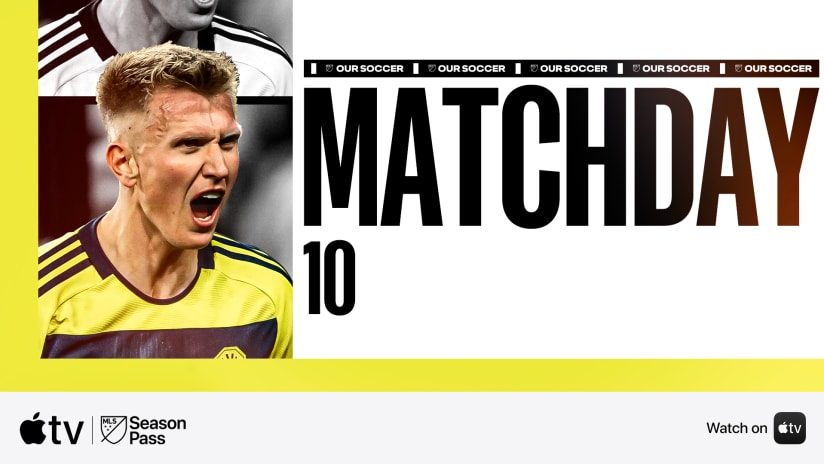This isn't a "crisis" column because the LA Galaxy aren't in a crisis. They lost on Saturday, yes – 2-1 at Sporting KC – and they didn't look particularly good in the process. But that's their first loss in two months, and only their fourth on the season.
So the Galaxy are fine, and will continue to be fine. They'll take their customary place in the playoffs come November, and if you were to put a gun to my head (or even just ask nicely – there's no reason to be so violent) I'd say that they'll be playing in the Western Conference Championship vs. Seattle, and have a very, very good shot at getting the job done.
But this is a different LA team than the one Bruce Arena has guided since 2008, and it's not about "form." Or at least it's not mostly about form. It's been about tactical fit and a new system that is operating in fits and starts.
1. Diamonds Are for Now
LA, like so many other teams in the leauge, have been playing around with the diamond midfield all year. It's produced some good defensive results – they've given up a league-low 16 goals, and are one of two teams in the league with a sub-1.00 goals-against average (SKC are the other, to no one's surprise).
The attacking results, however, have been largely indifferent. LA are slower to get out on the break than they've been at any point in the Arena era, and are playing the game more in the midfield rather than playing purely back-to-front or pinning you deep to let Robbie Keane run the show.
Here's a look at four key numbers, none of which tell the story themselves, but when combined paint a pretty decent picture of how LA plays:
Team |
Chances Created from Open Play |
Big Chance Created |
Passes, Final Third |
Passing Accuracy, Final Third |
LA Galaxy |
185 |
22 |
2,164 |
69.04 |
Houston Dynamo |
174 |
13 |
2,220 |
63.15 |
Columbus Crew |
171 |
10 |
2,532 |
70.06 |
Colorado Rapids |
169 |
8 |
2,286 |
61.59 |
Portland Timbers |
168 |
9 |
2,381 |
66.19 |
New York Red Bulls |
167 |
19 |
2,432 |
67.06 |
New England Revolution |
167 |
9 |
2,652 |
63.73 |
Philadelphia Union |
166 |
15 |
2,457 |
64.88 |
Vancouver Whitecaps |
163 |
17 |
2,169 |
65.24 |
Seattle Sounders FC |
160 |
19 |
2,156 |
67.21 |
Sporting Kansas City |
152 |
15 |
2,427 |
65.35 |
Real Salt Lake |
148 |
15 |
2,246 |
65.76 |
D.C. United |
139 |
8 |
2,060 |
63.79 |
Montreal Impact |
136 |
11 |
1,720 |
57.21 |
Toronto FC |
128 |
8 |
1,762 |
59.48 |
Chicago Fire |
127 |
12 |
1,832 |
60.75 |
FC Dallas |
121 |
14 |
2,024 |
60.28 |
San Jose Earthquakes |
116 |
8 |
1,911 |
63.63 |
Chivas USA |
98 |
12 |
1,757 |
60.56 |
In case you don't want to sort, LA's rank in the above is first, first, 11th, 2nd. Last year in the same they were first, third, first (by a mile) and second.
The big difference, then, is the sheer number of passes LA have completed in the final third. In 2013 it was nearly 150 per game, but in 2014, it's dropped to about 135 or so.
This doesn't mean the diamond isn't working, but it does illustrate some of the problems LA have had in maintaining constant pressure (by their standards) against good teams. And it's no surprise that they continue to look more natural in attack when switching back to the flat 4-4-2 they've used so well for so long.
We saw that move again on Saturday, coming about 30 minutes into a game that had been, to that point, dominated by Sporting.
2. The Reason for the Diamond
Here's a bit on why the 4-4-2 will never go out of style:
But here's the problem with the Keane/Donovan pairing: they are small, and they are only rarely dangerous on service from out wide. They can also be bottled up pretty effectively when the game gets compact, as has often been the case in the year-and-a-half since David Beckham retired. Forget the man's set pieces – it was his ability to get the ball out into space with speed and accuracy that was most valuable to everything LA did.
If 2013 taught MLS anything, it was that the Keane/Donovan partnership wasn't as effective without Beckham opening up the game.
So for 2014, LA invested in a pair of target forwards. Unfortunately for all parties involved, both new arrivals have been busts as Samuel was sent back to Brazil while Rob Friend can't even get off the bench. One of them was supposed to move up top while Donovan would drop back into the midfield.
That didn't quite work because Friend and Samuel didn't deliver in front of goal, and because neither could stretch the field off the ball. Throw in Donovan's reduced mobility from wide – I'm completely #TeamLandon but even I can admit that he struggles to make a 90-minute impression from that spot these days – and suddenly it's pretty clear that the best way to get LA's two best players into the same attack is to have Robbie be Robbie and have Landon be Javier Morales.
It doesn't always work. Arena scrapped the diamond after 30 minutes because the Sporting midfield was allowing Donovan zero time on the ball, which negated his creative influence.
The right call was going back to the tried-and-true, and LA had their chances to get a result – which drives home the point that, yes, the whole thing is a work in progress.
3. The Shape of Things to Come
Gyasi Zardes has spent most of his career to this point as a wide midfielder. That's because he's been, until recently, a poor finisher, but also because Keane and Donovan share a single soccer brain. They understand how to move off of each other when paired up top, opening space and creating channels for themselves and the rest of the attackers.
We've still seen bursts of that this year, but over the last two months the Galaxy have begun to embrace their "Gyasi No. 9" destiny. His runs aren't yet as dynamic from up top as they could be, and he's as likely to draw gesticulations of frustration from Keane as he is a nod of approval. They also lose a bunch of this:
Nevertheless, Zardes' production has been good and what the Galaxy sacrifice in terms of movement they've gained in terms of physicality. He can win individual battles that Keane and Donovan don't want to fight, and even if it didn't work against KC (they've made better forwards look much worse, by the way), the decision to move Zardes up top is the right one.
The Galaxy, more than any team in the league, know that the battles you lose in July are the lessons you lean on in November. And that's when the battles they really want to win will be fought.



